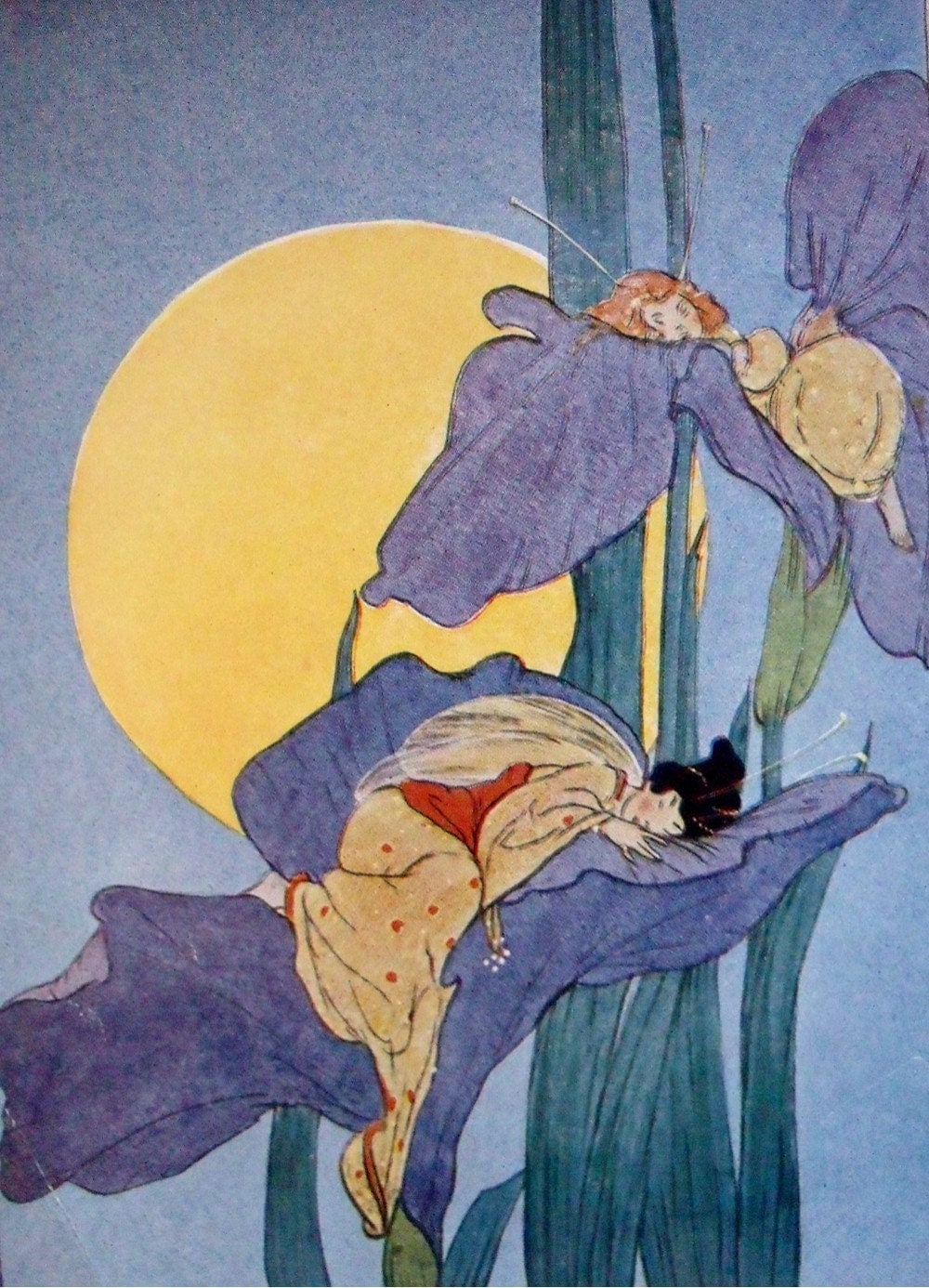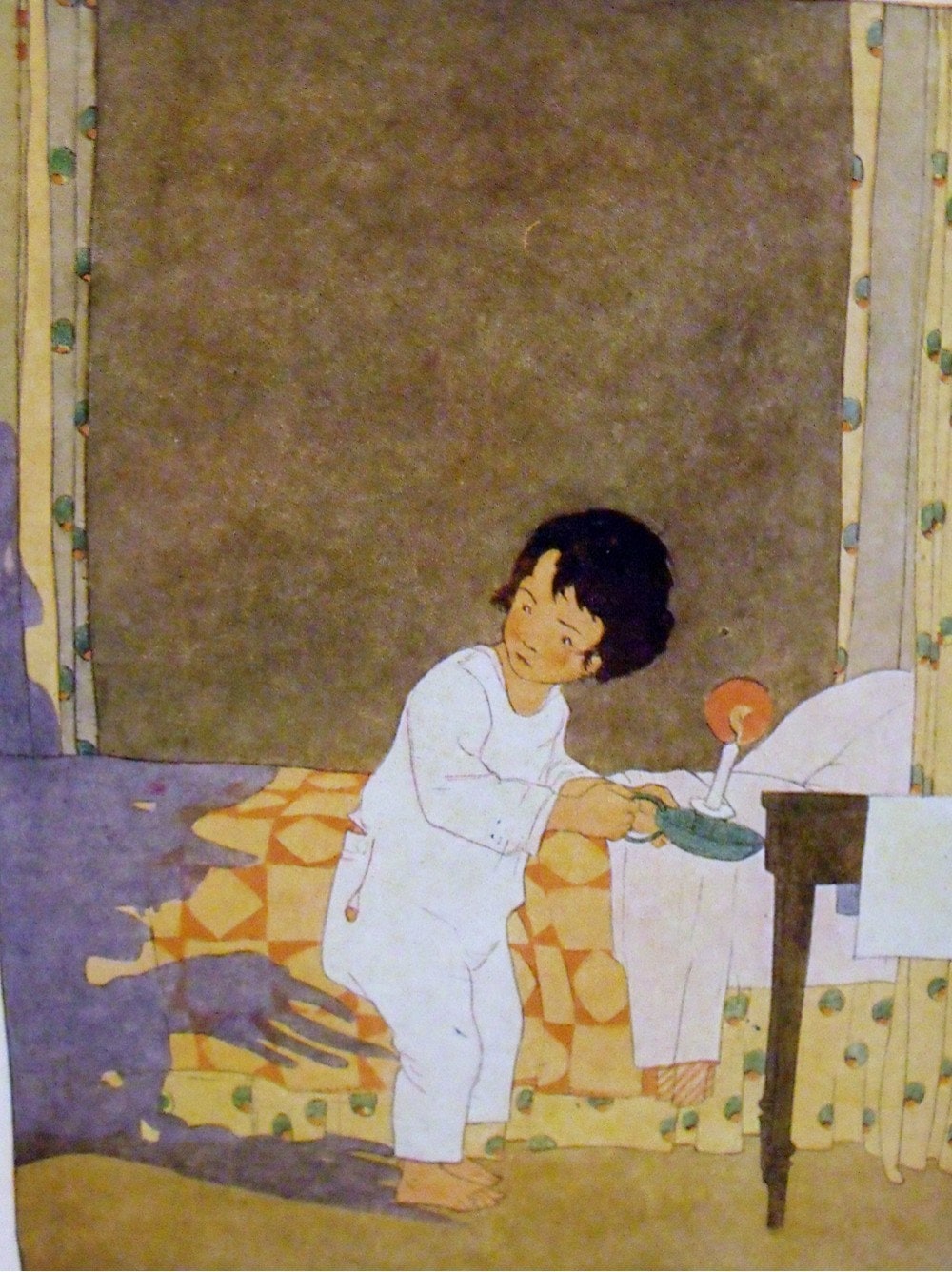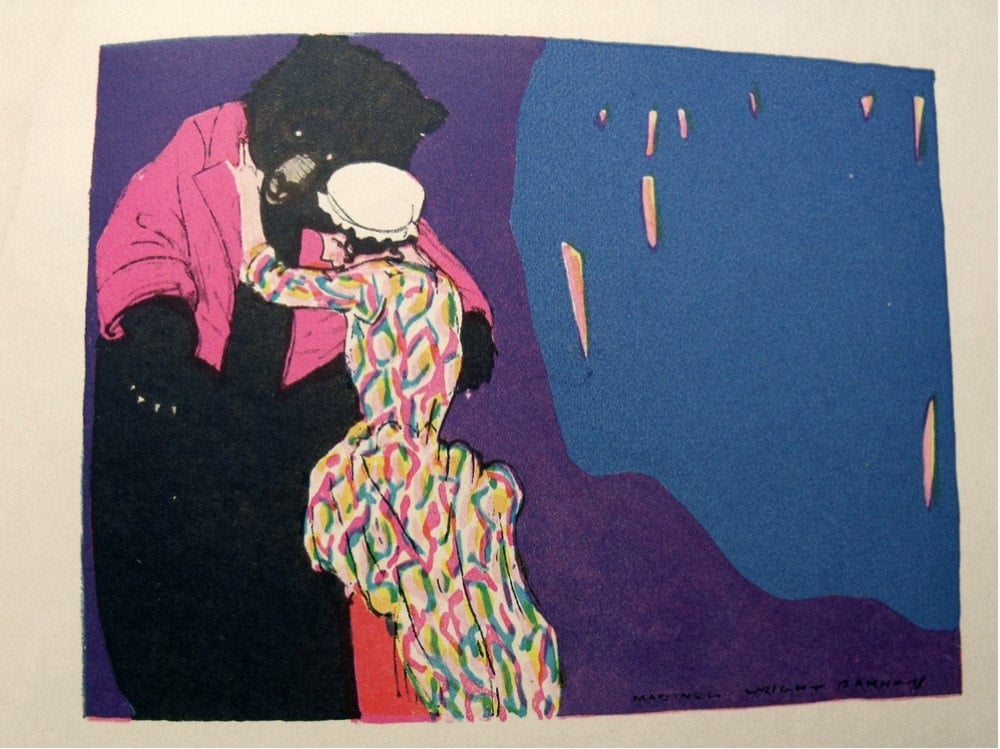What a gene pool. Her older brother was Frank Lloyd Wright, and we all know what he did for a good share of his life. (Built lots of buildings, chased lots of women.) Frank was 14 years older than Maginel, and a lifelong collector of Japanese prints. It would seem that looking at her older brother's collection certainly had an influence on her work.
 |
| From "Flower Fairies, c. 1915 |
Maginel's rendering of plants and flowers has always been, to me, more interesting, nuanced and technically superb than her illustration of human beings. However, since she was often illustrating fairies and children for children's books, the work was going to be simpler and stylized.
I've also been intrigued by her use of large color fields in illustrations:
 |
| From When Little Thoughts Go Rhyming, c. 1916 |
There's a lot of mathematical precision in the way she divided and composed each illustration -- and I think it created an order and serenity in her work. I've never read any scholarship regarding how much other artists working at the same time influenced her work, nor do I know anyone has taken the time to look into it. However, it would make sense that she was looking at a lot of contemporary, cutting-edge artwork -- it wasn't like the Wright family were cultural slouches. And my primary reason for speculating about her influences are the incredibly intense illustrations for Honey Bear, c. 1923.
And since Fauvism came from the term les Fauves, which means "the wild beasts" and Honey Bear was about a wild beast in a forest, I think doing Fauvist illustrations was absolutely perfect. Maybe that wasn't what Maginel was up to, but it's my theory and I'm sticking with it.


No comments:
Post a Comment